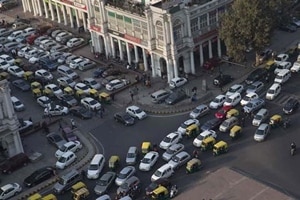When it comes to road safety, India’s record has been disappointing to say the least. With an acute lack of traffic sense, lack of knowledge of traffic rules, lagging infrastructure and increasing population of vehicles, the recipe for accidents unfortunately keeps getting more effective every day. We lose more than 1.5 lakh fellow countrymen in more than 5 lakh road accidents every year, government statistics suggest. These are alarmingly high number for a country, where car ownership per 1,000 people is not even a quarter of key economies in the West.
Although late but better than never, the Motor Vehicle (Amendment) Bill 2016 has been approved by the Union Cabinet, chaired by the Prime Minister Narendra Modi. The Ministry of Road Transport & Highways (MORTH) is hoping the new bill will lower accidents by 50%. The new bill aims to reduce accidents by increasing the amount of fines, improving the implementation of traffic rules and simplified registration process for new vehicles. In this article we list out the most common traffic violations that we come across in day-to-day driving, some of which could now cost up to 10 times of present level.
1. Drunken Driving: It’s good to see that in the past few years, there has been increased strictness around drunken driving, both in terms of fines and implementation. The new bill propose the fine for this violation to be increased from the present Rs 2,000 to Rs 10,000, resulting in a five-fold increase, which could prove to be an effective deterrent for most people in the country.
2.Driving Without License: The number of people driving on our roads without a license is quite huge, mainly due to lack of effective vigilance. Presently, the fine for being caught driving/ riding without a license is just Rs 500. Thankfully, this amount has been increased to Rs 5,000, which should prevent people from taking this risk.
3. Seatbelts save lives but lack of awareness and a callous attitude by people results in few people actually wearing a seatbelt. While in metro cities the number of offenders is smaller, in rural areas it’s a challenge to spot someone wearing a seatbelt. After all the fine for this offence is a laughably small Rs 100. This amount has now been raised to a somewhat respectable Rs 1,000. I still feel this amount is lesser than ideal and could’ve been higher but as they something is better than nothing.
4. Two-wheelers account for the maximum fatalities among all vehicle segments in case of accidents. The key reason for this is people not wearing a helmet, which greatly increases the chance of death/ serious injury even at slow speeds. While the fine earlier for not wearing a helmet was just Rs 100, it has been now increased to Rs 1,000 along with a provision to disqualify the license for a period of three months. The quality of helmets and their condition over a period of time still poses a big question mark on actual safety capability in case of a crash.
5. Dangerous driving or rash driving is one of the key reasons for accidents that not only harm the rider/ driver but fellow motorists and pedestrians too. The fine for this offence was earlier pegged at Rs 1,000, which has now been increased to Rs 5,000.
6. It’s a well-known problem that cases take a long time to reach a conclusion and even when they do, many times the accident-related cases close with a small amount of compensation. This made it hard to create sufficient fear in the mind of people to avoid hit and run. Fixed at just Rs 25,000 earlier, the limit has now been raised to Rs 2,00,000 with an upper ceiling of Rs 10,00,000.
7. Many a times vehicles operating in our country do not have the required permits and insufficient or inefficient implementation of rules simply compounds the problem. In this scenario, the fine for violation has been doubled from Rs 5,000 to Rs 10,000.
8. Speeding is one of the single-largest reasons for accidents and surprisingly the fine for over-speeding earlier was just Rs 400, which has now been increased to Rs 1,000 for Light Motor Vehicle (LMV) and Rs 2,000 for Medium Passenger Vehicles.
9. The need for speed in most cases is fulfilled at public roads by irresponsible vehicle users who jeopardise the safety of innocent road-users along with their own safety. The fine for this offence stood at Rs 500 earlier, making it hardly any discouragement for such irresponsible riders/ drivers. This amount has now been raised to Rs 5,000, which should give the wannabe street racers a reason to think before putting others at risk.
10. In case one did end up losing his/ her license due to any of the above listed offences or other traffic offences and still chose to drive, the fine was just Rs 500. This amount has thankfully been raised to an appropriate Rs 10,000 in the new amendment bill.
While the increase in fines in the amendment bill along with other changes is a welcome step, it’s effectiveness in reducing accidents will boil down to effective implementation. Hopefully, the Government of India has better plans for this as well, else this might turn out to be yet another policy update to only end up helping increasing the bribe rates for cops.
